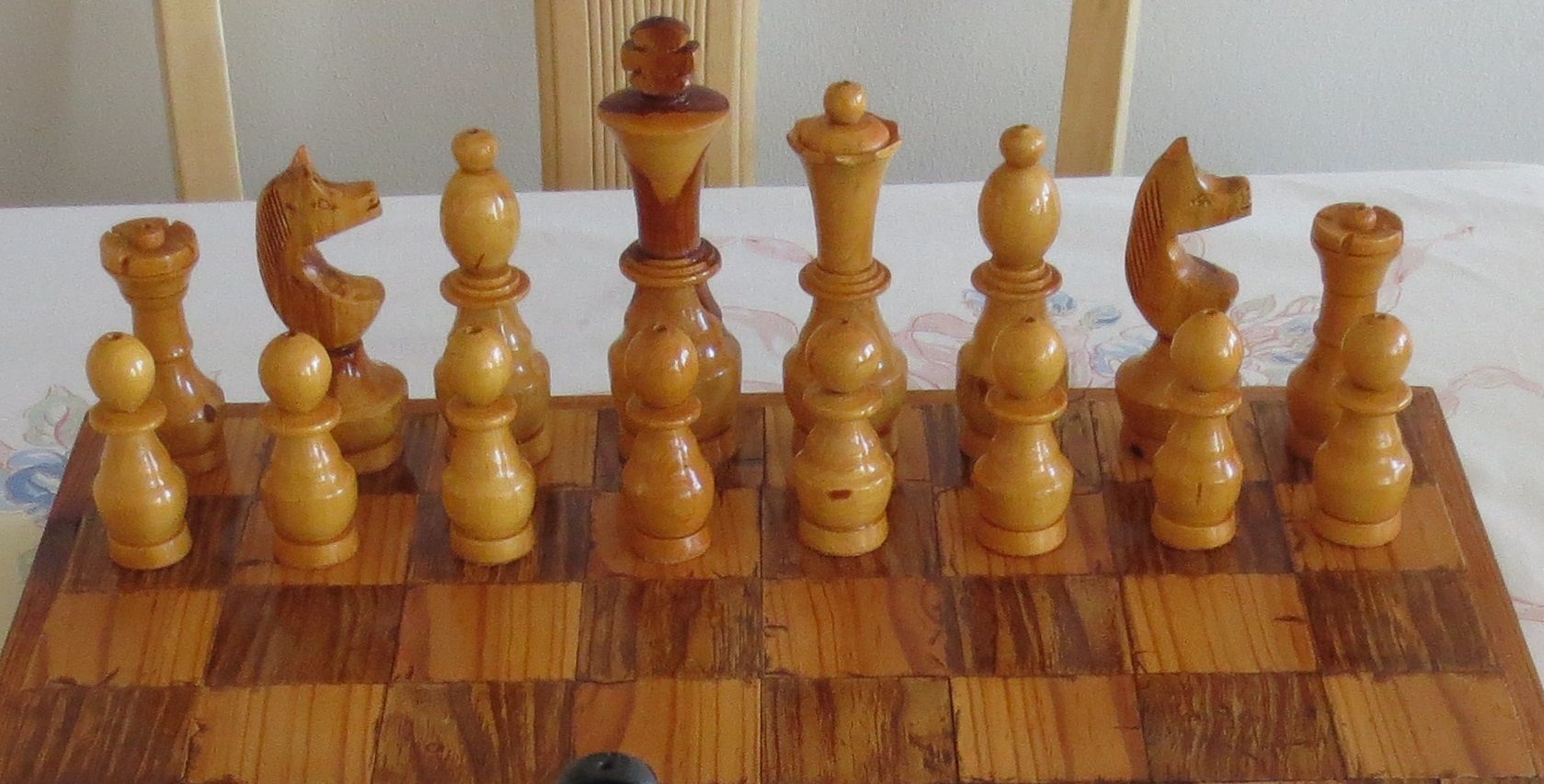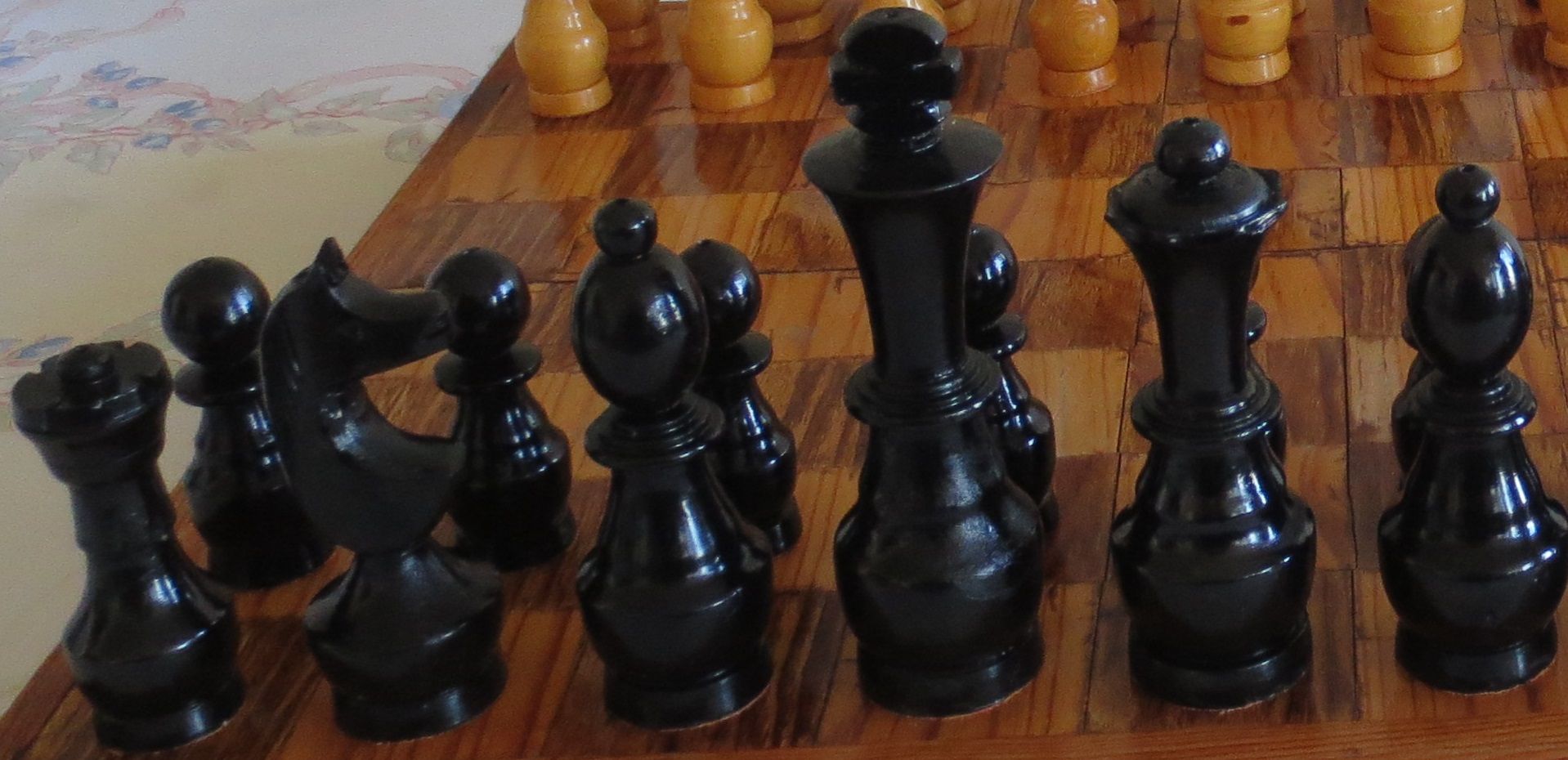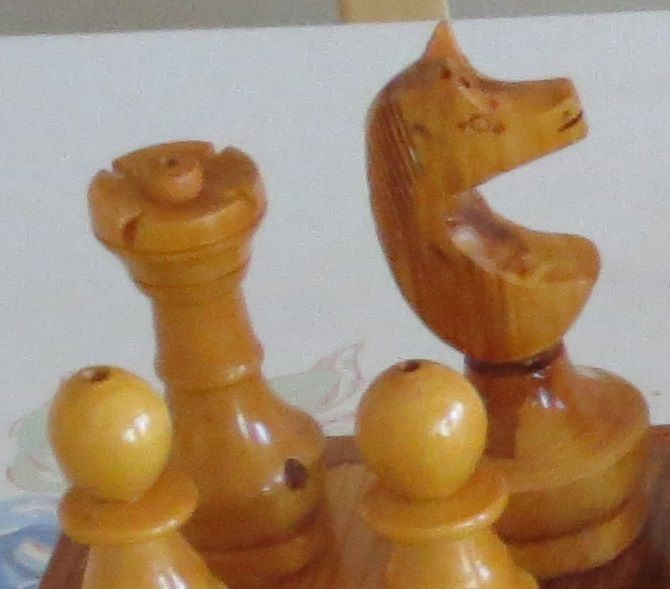Very nice indeed John. Obviously in keeping with the originality of the piece. That said, I would hesitate to caution others about potentially lethal fumes at it will only encourage the petrol sniffers. And the petrol station queues are long enough as it is

I have a strong interest in acoustic bowed instruments (violin family) as I played the violin in the 80s **. With restorations of those pieces the question is always how far do you go in order to maintain as much of the original as possible but maintain serviceability and reasonable aesthetics. For the most part, the best restorers tend to think that whatever will be will be and not go overboard, especially when it comes to varnish preservation. But you still have to maintain them of course.
I like looking at the antique chess dealer websites - there are a few good places in the UK and US. I always loved those original Jacques travel sets - the ones that really were hand-made by craftsman and the pieces were red and cream ivory - tiny but intricately carved and much easier to distinguish than any modern set no matter how well detailed.
One of my biggest regrets was seeing a mint set - one of the very last dating from the 1950s that honestly looked like it had been bought, used once or twice then put away for 60 years.
It sold for "only" 300 or so pounds which back then was a favourable exchange rate and a ridiculous price to boot, even though it wasn't of the more prized, earlier era.
It is a real pity that these days you simply cannot buy sets like that anymore. Actually you can't buy sets like yours anymore either. As much as manufacturers like to pretend their sets are marvellous, for the most part they are just commodities like refrigerators and modern cars. Yes, there are some that are very good value - I saw that Judit Polgar set last year and was hugely surprised by the quality / price ratio - amazingly good.
But if you want the Rolls Royces of sets these days you are paying well into 4 figures for the truly artisan-made sets from Jacques (the real Jacques).
I would happily sell a few of my kidneys for one of these, so long as I leave myself with at least two functioning ones:
http://www.jaqueslondon.co.uk/online-ch ... asket.html
** Some trivia. In my second year of high school I took lessons from the resident, visiting violin teacher for a year before moving on the following year to one of those wonderful Galamian Julliard graduates. I never knew this resident, visiting teacher had anything to do with chess until I arrived early for one lesson. He had a portable chess set in his lap, pondering a chess problem. Apparently he and his portable chess set were inseparable.
Four years after I had moved on to the other teacher, I ran into him again at a strong Sydney chess tournament. Turns out he was a very strong player indeed - well-known in Sydney. Even into his late 60s he was still playing well into high 1900s range Australian ELO which was the equivalent back then of the mid 2200s USCF (our rating system here was crazy - everyone was effectively under-rated to world standards by a massive amount). We had a great time catching up. He then played my brother (member
Klute) in a serious game in that very same tournament. It's a small world.
Chess is like painting the Mona Lisa whilst walking through a minefield.



